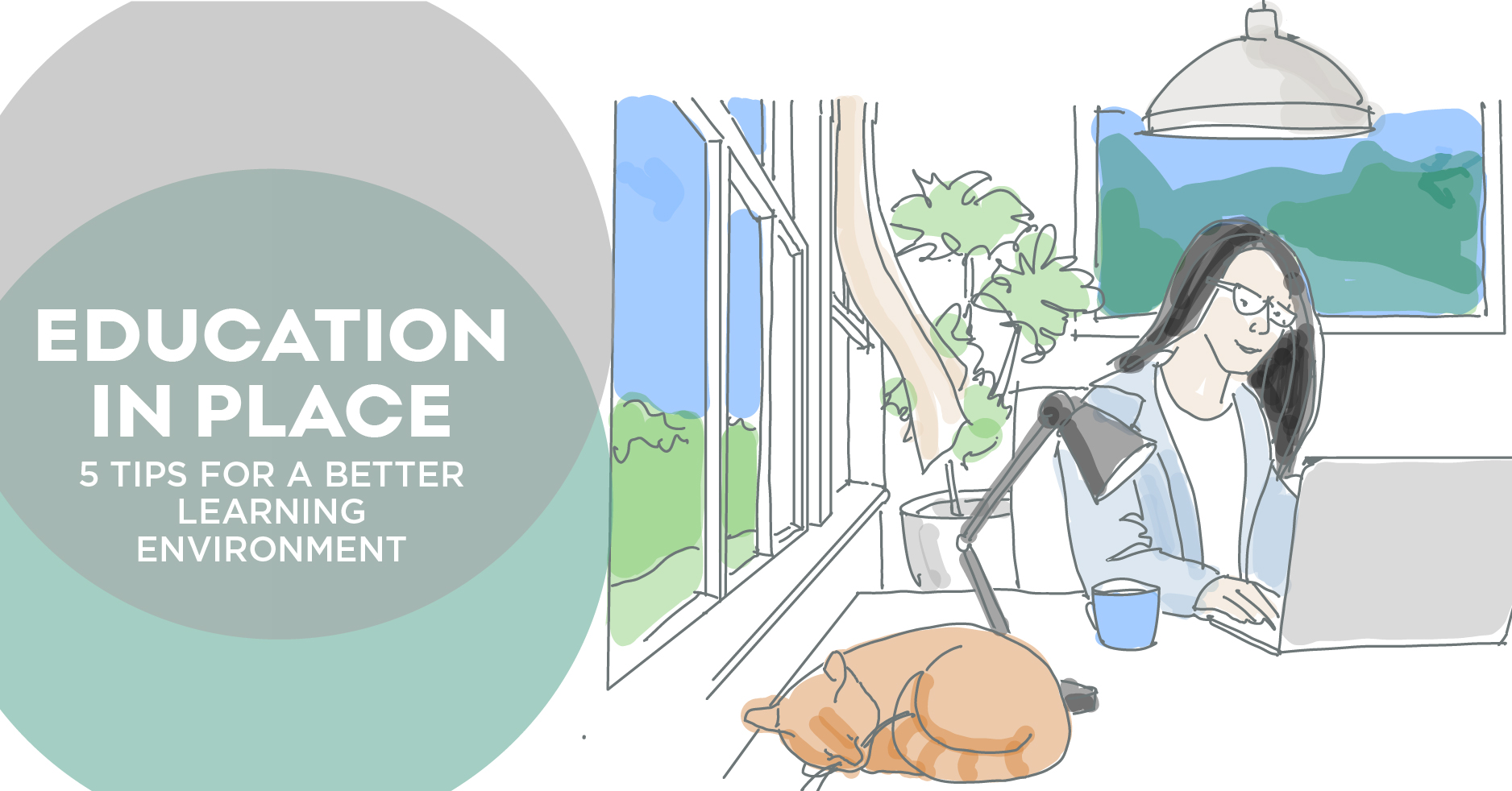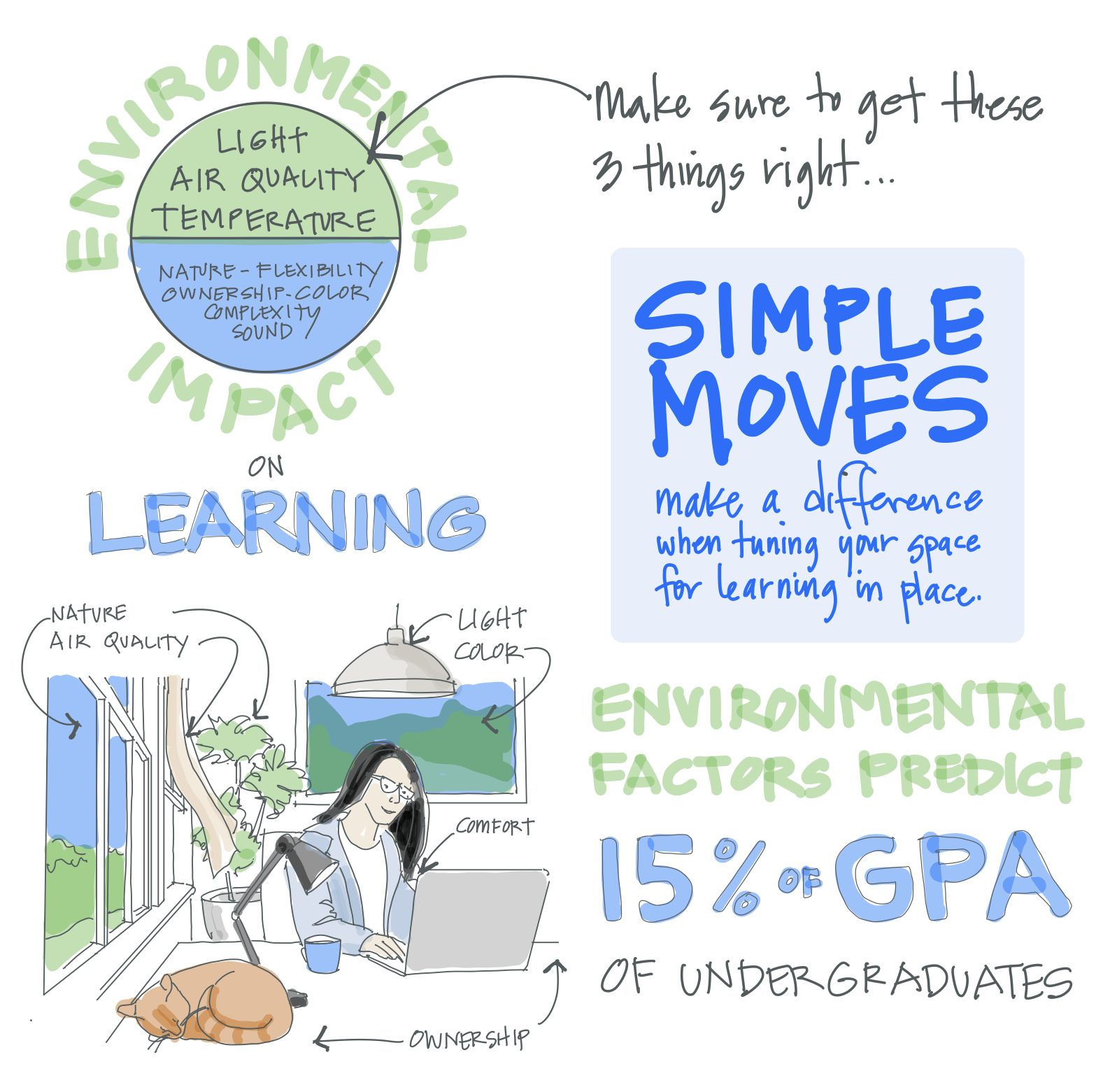
Most of us are accustomed to teaching and learning in a classroom, yet today, we found ourselves in different circumstances as the 2019/2020 school year started winding down for much of the country. In the face of a pandemic, we’ve seen that learning can happen and has been happening anywhere we can find a space to read, write or watch a lesson. If you’ve been finding it more difficult at home, did you know that where we choose to study could impact how we learn? We learn best in environments that keep us comfortable, give us flexibility and encourage focus. As we continue adapting to new ways of connecting and learning at a distance, it’s important to remember what qualities make a good home learning environment so that you can be successful wherever you are, whether that’s on campus, at home or in the virtual realm.
A 2013 study identified 10 environmental factors that impacted student learning rates in primary school classrooms. In 2015, the study was expanded, illustrating that the factors of light, temperature, air quality, ownership, flexibility, complexity and color demonstrate the most significant effects. Appropriate light, temperature, and air quality, demonstrate the greatest impact, “accounting for approximately 50% of the impact on learning.”
More recently, it was determined that a similar list of variables “predicted close to 15% of the Grade Point Average (GPA) of undergraduate students.” These variables included ventilation during lessons, chair ergonomics, echo level, WiFi coverage, room size, desk ergonomics, indoor noise, ventilation control, artificial light control and artificial light quantity.
Through our design work with K-12 and higher education clients, we’ve seen how valuable good classroom design can be, but what makes a good classroom? And how can you recreate that at home as summer learning and a new academic year are on the horizon?
Here are our top 5 tips to create your best, most productive learning environment wherever you are:

Pick a comfortable space that works for you. Dedicate a space to your home learning environment that’s suited to what you’re studying and how you study best and call it yours. It’s argued that intimate and personalized spaces are better for absorbing, memorizing, and recalling information. A personalized space can help to cultivate feelings of responsibility. For children taking classes at home, consider providing a place to display work that they’ve done, much like they would in school. Examine the quality and scale of the furniture, and make sure it’s comfortable and supportive.
Incorporate both natural and artificial light. It’s all about the mix! Research tells us that natural light can help regulate sleep/wake cycles, so it’s important to draw natural light from multiple orientations and seek indirect natural light to negate glare (i.e. by facing north or having a roof or porch covering as a shield.) Integrate high quality artificial lighting sources that radiate steadily with a warm tone as well as task lighting to illuminate work surfaces with greater control. Pay attention to over-saturating your space with high quantities or poor–quality artificial lighting, which can cause headaches and impact focus.
Strike the right balance of complexity. Minimizing distractions like too much clutter or obtrusive sounds while also giving yourself the right amount of stimulation in your environment can help increase focus and productivity. Playing music, doing schoolwork around siblings or scheduling periods of schoolwork and play can be balanced throughout the day.
Stay connected to nature. This includes views to nature, opening a window for fresh air, hearing natural sounds and even taking a break to go and enjoy nature outside. Many studies analyzing the effects of biophilic design show as little as 10 minutes in nature can have a great effect on students, and views to nature can have a restorative effect, renewing our attention and easing our stress.
Stay connected to one another. Whether working at home next to a sibling or connecting virtually to fellow students, in–person and virtual connections foster camaraderie, encourage idea sharing and enable collaborative problem-solving to occur. Stay connected through digital platforms like Skype, Zoom, Microsoft Teams, Facetime, Google Hangouts and many more platforms which allow both audio and visual connections and often allow document and screen sharing. Make new connections by looking to online learning platforms to continue learning and exploring areas of interest. iTunes U, Coursera, Khan Academy, LinkedIn Learning, and countless other platforms are available online – some paid and many free – offering opportunities to take single and ongoing courses across an endless array of subjects. Lastly, be intentional. Schedule times to meet for work and for fun!
Have you hit your stride while learning from home? We’d love to hear how you’ve optimized your home learning environment – let us know in the comments!




